#Adolph Rickenbacker
Explore tagged Tumblr posts
Text
La chitarra elettrica
Con la nascita delle prime orchestre jazz, all’inizio degli anni ’20 del secolo scorso, nacque l’esigenza di aumentare la potenza dell’amplificazione. In particolare il problema si poneva per le chitarre che erano difficilissime da amplificare con dei normali microfoni che, a causa della cassa armonica, tendevano a innescare (effetto larsen). I costruttori iniziarono così a produrre chitarre con…
youtube
View On WordPress
#Adolph Rickenbacker#Chitarra elettrica#Ercole Pace#Fender#Gibson#Leo Fender#Les Paul#Lloyd Loar#Merle Travis#Paul Bigsby#Strumenti Musicali#Youtube
1 note
·
View note
Text
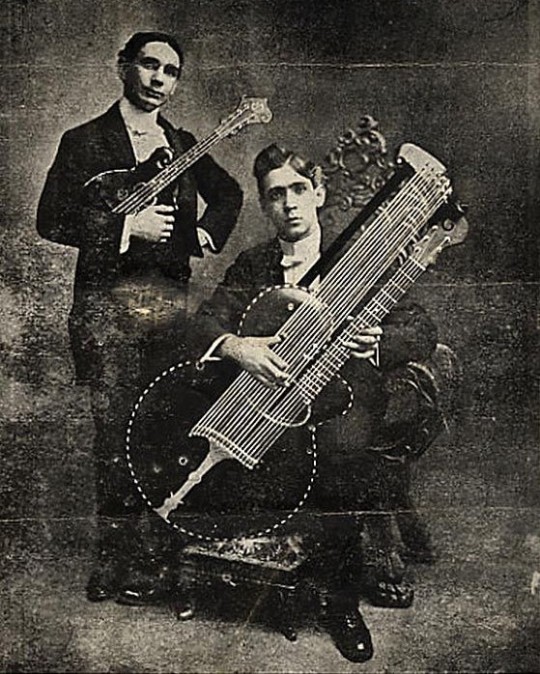
Feb 11 is "National Guitar Day." The first record of a guitar-like instrument with four strings is found in Iran. In 1500s the modern guitar began to take shape. According to some sources, the world's oldest surviving guitar is more than 400 years old and was built in the late 16th century by a Portuguese man named Belchior Dias. In the late 1800s the five-string Baroque guitar made way for the modern six-string classical guitar, crafted and perfected by the Spaniard artist Antonio de Torres Jurado. In 1894 Gibson set a course for the future with it's more durable mandolin-style guitar with breakthrough designs played louder than competitors' guitars, revolutionizing music-making. The electric guitar was invented in 1931 by Adolph Rickenbacker and became the go-to instrument for jazz and blues players.
(Pictured: Oldest Extant Gibson Harp Guitar)
6 notes
·
View notes
Text
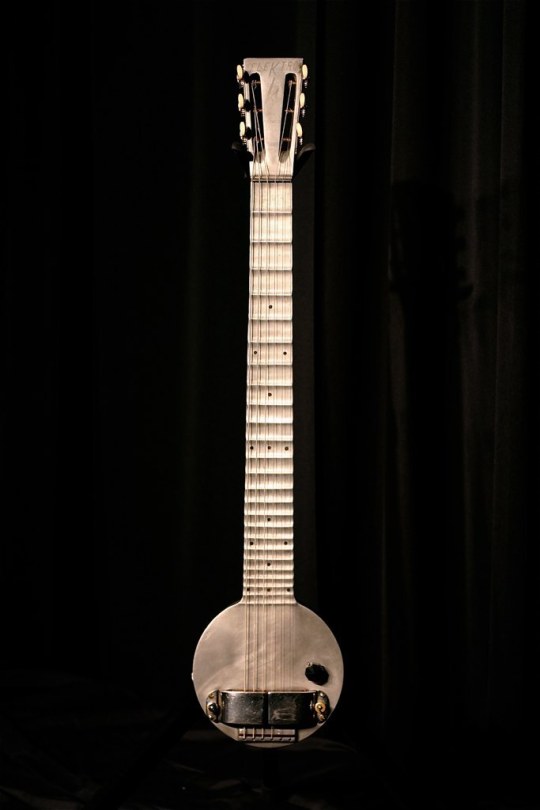
Frying Pan the 1st electric guitar, 1931
The “frying pan” was the first electric guitar ever produced. The instrument was created in 1931 by George Beauchamp, and subsequently manufactured by Rickenbacker Electro. The instrument earned its name because its shape resembles a frying pan: it has a flat, circular body, and the neck represents the “handle.” It was a lap steel guitar designed to cash in on the popularity of Hawaiian music during the 1930s. Beauchamp and machinist Adolph Rickenbacker began selling the Frying Pan in 1932; however, Beauchamp was not awarded a patent for his idea until 1937, a fact that allowed other guitar companies to produce electric guitars during the same period.
2 notes
·
View notes
Text

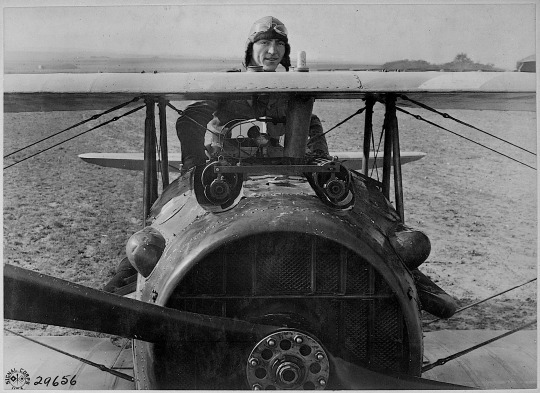
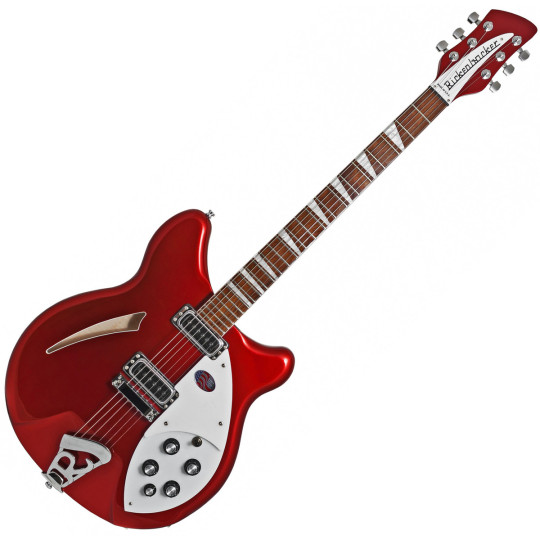

FRIDAY FLASHBACK “We Go All Together Now” https://johnnyjblairsingeratlarge.bandcamp.com/track/we-go-all-together-now-demo-remastered-2020
…Today the Flashback Machine flies the Rickenbacker name, prompted by today being the birthday of Eddie Richkenbacker, the heroic World War I flying ace, race car driver, and pioneer in air transporation (among other things). His cousin was Adolph Rickenbacker, founder of Rickenbacker Guitar Company (in California) and co-creator of the electric guitar (he was also an advocate of the left-handed guitar). His brand took flight in the 60s and 70s when bands such as The Beatles and Yes prominently used Rickenbacker products. In the 90s my friend Adam Savetsky loaned me his Rickenbacker 360 guitar and I rush-recorded tracks with it before it had to go back. Here’s “We Go All Together Now,” a home demo from that rush. Meanwhile, Happy Birthday Eddie and thanks to the Rickenbacker family…
https://johnnyjblairsingeratlarge.bandcamp.com/track/we-go-all-together-now-demo-remastered-2020
#flashback #Friday #rickenbacker #eddierickenbacker #adolphrickenbacker #guitar #bass #rickenbacker360 #beatles #johnlennon #paulmccartney #georgeharrison #yes #chrissquire #adamsavetsky #johnnyjblair #singersongwriter #singeratlarge
#flashback#Friday#rickenbacker#Eddie Rickenbacker#Adolph Rickenbacker#guitar#bass#Rickenbacker 360#The Beatles#John Lennon#Paul McCartney#George Harrison#Yes#Chris Squire#johnny j blair#singer at large#singer songwriter#san francisco#Adam Savetsky
1 note
·
View note
Link
#science#history#music#electric guitar#Stromberg-Voisinet#Adolph Rickenbacker#Les Paul#Leo Fender#BBC Future
1 note
·
View note
Note
The first electrically amplified guitar was invented by musician George Beauchamp and electric engineer Adolph Rickenbacker in 1931. An electric guitar utilizes electromagnetic radiation to convert vibrations of its metal strings into electric signals.
pog
2 notes
·
View notes
Text
Understanding Humbucker vs Single Coils Guitar Pickups
What is the difference between a guitar with single coil vs humbucker guitar pickups? Aside from personal preference and the type of music you’re playing, here is a summary of the technical differences, the common sounds associated with both pickups and why you may prefer one over the other for your next electric guitar or customization.
Let’s talk about the history of each and how they work. And how to make guitar pickups here too!
Single Coil Pickups
The single coil guitar pickup was the original electric amplifier for the electric guitar. It is said to have been first invented by a guitar player named George Beauchamp, with the support of none other than Adolph Rickenbacker, during the 1920’s.
A single coil pickup has two magnets and one copper wire coil attached to a multimeter. This device changes the voltage as the guitar strings vibrate over the magnetic field from each pole piece to pick up the electronic signal – whether it is passive or active pickup. It’s this direct connection to the strings that made the guitar electrified, but also created a lot of uncontrollable noise.
This was the standard until the humbucker came to the market.
Humbucker Pickups
Until the mid-1950’s the humbucker pickup style was not widely known. Single coils pickups were how you transmitted the electricity to make your guitar scream. But they delivered a lot of extra buzzing and humming on the guitar strings.
This was common in other electric guitar equipment, particularly speakers and microphones. So in 1934, the dual coil or humbucking coil pickups were designed and utilized to improve the performance of this type of equipment.
A year later, this twin coil humbucker design was installed in a guitar. It took that electricity and sent it through two coils with two magnets set up to oppose each other. Bottom line, the hum was gone, the sound was smoother and heavier, and the humbucker pickup was born with a fuller sound.
In 1955, a Gibson engineer named Seth Lover, filed a patent for his design of this device. Gretsch guitars followed suit and humbuckers have been the standard ever since.
Well known metal players usually use these but some blues players may as well.
Looking for something that works well with a humbucker pickup?
best fuzz pedal for humbuckers
Best overdrive pedal for humbuckers
best metal guitar pickups
Sound Difference
If you are deciding on humbucker vs single coil pickups, one of the biggest factors will be which sound you prefer when choosing from the types of guitar pickups.
Single coil sound is known for their clean, bright sound, and there are still a lot of popular guitars made with them today. Of course, digital amps and pedals can give any guitar a library of sounds, but a bright, crisp sound is where the single coil starts.
Guitars and Guitarists that use Single Coil Pickups
Most Fenders Use Single Coils
There are still many guitars made with single coil pickups and they have been the go-to choice for names like Stevie Ray Vaughan, Jimi Hendrix and many others. The majority of Fender guitars have single coil pickups, including the Fender Telecaster single coil models.
Danelectro is also well-known for their vintage sound (and style) based on guitars with single coil pickups.
Although most Gibson guitars are fitted with humbuckers (also sometimes called humbucking pickups), they were one of the first to install the original single coil, what they called their “bar pickup” in their Hawaiian lap steel in 1935, and in the ES-150 Spanish guitar in 1936.
It’s interesting to note that Jimi and Stevie Ray got a wide variety of sounds from their single coils, particularly Jimi Hendrix. This was due to his extensive experimentation inside the studio and out, but it demonstrates that it’s as much about what the guitarist wants to accomplish, than what the pickup can deliver.
Popular Pickup Brands
Seymour Duncan
EMG
DiMarzio
Other Popular Pickup Types
P 90s
ceramic magnet
Acoustic pickups
Guitars and Guitarists that use Humbuckers
As mentioned above, Gibson guitars uses humbuckers almost exclusively, as does Danelectro and Epiphone. And this pickup has become so popular that using a guitar with one single coil is usually done if the guitarist wants to differentiate their sound from the masses because of the higher frequency response.
That said, designs like the Fender Stratocaster use 3 single coil type pickups that the player uses a switch to flip through. One pickup is for the neck, one is for the bridge, and one is for the mids. The neck pickup corresponds to deeper, heavier sounds. The mid-range emphasizes mid-tones, and the bridge pickup amplifies highs and treble tones.
As with so many things today, we have a lot of quality choices. Whether you prefer humbucker or single coil pickups comes down to whether or not you like the way a guitar feels and plays, first and foremost.
After that you have to consider what kind of sound you want from your guitar pick ups and how to sound great with them! As a general rule, humbuckers are smoother with a richer sound, and single coils have a more vibrant sound. But rules were made to be broken, and technology can do a lot to change either sound.
The post Understanding Humbucker vs Single Coils Guitar Pickups appeared first on Happy New Guitar Day.
from Happy New Guitar Day https://www.happynewguitarday.com/humbucker-vs-single-coil/
3 notes
·
View notes
Text
Adolph Rickenbacker & George Beauchamp: create the first electric guitar
Glenn Snoddy: creates fuzz pedal
Adolph Rickenbacker & George Beauchamp:

6 notes
·
View notes
Text
The Rickenbacker Bass

...I never noticed the Rush patch on Cliff Burton’s knee before.
Anyways, recently I had the chance to take a Rickenbacker 4003 for a spin at my local music instrumentdashery, and whooboy is that thing a motherfucker. God knows how many words I’ve spent on the Precision and Jazz Basses from Fender, but there are other iconic basses that are incredible and defined music in their own right.
The Rickenbacker is not some versatile, “sits perfectly in the mix” bass...it cuts through the mix like a goddamned swashbuckling pirate. This is not the bass you take to a Motown session or a gig at a wine bar...this is the one you take when you have to wield some serious sonic mass and keep up with stacks of Marshalls and thundering drums.
***
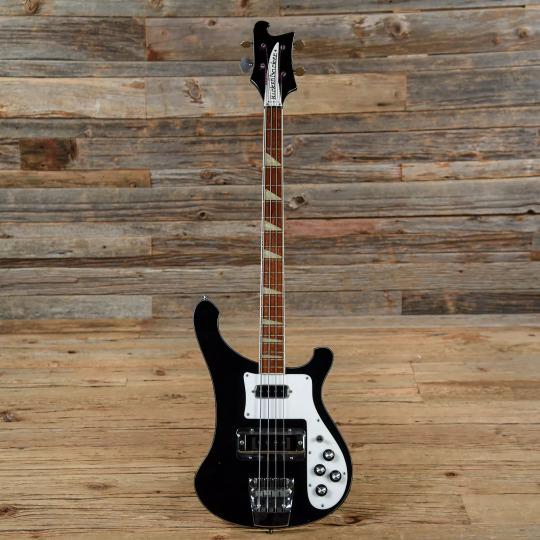
U-G-L-Y.
Ugly ugly ugly ugly ugly.
It’s almost like this thing was designed with bizarro ergonomics. “Just how sharp do you want those edges jamming into your wrist and ribs? Mega sharp? Perfect!” “Oh, you’re going to be standing with this strapped to your shoulder? Cool if we make it 15 pounds and make the giant headstock dive to the ground like a kamikaze pilot? Awesome!”
Walking up to a Rickenbacker bass is a wholly uninspiring experience until the moment you wrap your hand around that skinny neck and play those first amplified notes. After that, it all makes sense.
***
youtube
There is a bassist in one of the most unfortunately famous bands of all time, but he’s a no-talent assclown and doesn’t even deserve to have his name mentioned alongside the bassists I’ll be talking about today. That’d be like saying Magnum PI was a Formula 1 driver because he drove a Ferrari.
The track above is the Rickenbacker sound that put its stamp on music, not some limp-dick bullshit like the Beatles. Chris Squire played bass nominally. While the instrument he played was technically a bass, what he played on it was lead guitar, pure and simple. Chris Squire could shred every bit as well as Steve Howe, Rick Wakeman and Bill Bruford, and a large part of his strategy was his Rick.
What Squire did revolutionized not just the role of the bass inside a progressive format, but also the bass itself. Squire modified his 1964 Rickenbacker 4003 to have two outputs...the neck pickup was sent to a bass amp, the bridge was sent to an overdriven guitar amp, creating a chorused, distorted stereo tone that cut through the morass that Yes easily could have become with so many notes clogging up the space.
Remember historical context. We’re talking early 1970′s when roundwound strings hadn’t really become prevalent, solid state amps hadn’t come around yet and everyone was putting parts together like MacGuyver because this was still the primitive era of sound and rock music.
But Squire stumbled upon the Rick’s perfect formula...super bright roundwound strings, overdriven amplifier, played with a pick. If you needed to keep up with this new breed of turbocharged guitarist, that was the arsenal you needed. And it’s one that really hasn’t been improved on.
***
youtube
Since the most common transition is bass to guitar and not vice versa, you see a lot more hybrid instruments in the bass world than you will in guitardom. Guitarists realized pretty quickly that there were limits to drop tunings and adding lower strings...you start wading into the bassist’s territory and all the sudden the mix sounds like a giant jacuzzi full of mud.
Typically you see basses with shorter scales and guitar-style pickups. Almost like a baritone+ guitar rather than a bass. Something like this...

*Before anyone makes fun of this guy, he’s one of the most in-demand session bassists and producers in the industry right now...
When I think of the Rickenbacker bass, I actually consider it a hybrid too, despite the traditional scale and electronics. It’s a electric guitar forced to wear bass clothing, because when you play that thin, blazing-fast neck and get those screaming pickups going, it’s more like a guitar at that point.
The Precision Bass is a bass, and makes no illusions about being anything else. It can play melodic, fast lead stuff, but it’s first role is primarily to lock down that low end and sit in the mix between the bass drum and snare. Even the Jazz Bass, with it’s slim neck and expanded sonic modeling (i.e. extra pickup), was still clearly designed to tackle basslines and grooves.
But the Rick is not going to do that thump, it has no illusions about holding down any type of groove, and frankly it doesn’t really care. Think about a professional bassist’s typical job requirements...not the rock star stuff, rather paying the bills stuff...”money” gigs, musical theater pit shows, weddings, lessons, recording commercials, etc.
The P-Bass is so prevalent because it can do all of those gigs easily. Jazz Bass too. But the Rick’s trebly, jangly, aggressive sonic scimitar sound that weighs a million pounds and doesn’t fit into gig bags is not the best choice, practically speaking.
***
youtube
youtube
COUNTERPOINT: Fuck practicality.
***
youtube
So there’s the Rick. You’ve no doubt heard it before, even if you didn’t realize that’s what you were listening to.
In terms of history, it does have a cool history. Adolph Rickenbacker was a Swiss engineer who started working for National Guitar Company (the steel resonator slide guitars) when he met this guy named George Beauchamp. Beauchamp was this dude who had these ideas about amplifying a guitar, but National was the wrong company for that idea to fly.
So Rickenbacker and Beauchamp started their own company and set out into the great unknown after the Great Depression pretty much put everyone out of business.
This duo pretty much built the entire company from the ground up...along the way coming up with revolutionary design ideas that are commonplace today. The tremolo bar (”whammy bar”) and “neck-through” construction were both invented by these guys in the 1950′s.

Neck-through construction is the best method for building a guitar. Fact. It’s also the most expensive, most complex and most difficult to repair, but from a quality of sound standpoint, it’s full stop the best. You start with the neck and then glue the body’s “wings” to the side...sometimes, but not always, putting a solid wood top over the laminates. What this does is affix the pickups, bridge and strings to the neck, giving it one solid, undisturbed mass for the best resonance.
It’s a different sound than bolt-on (Fender) or set-neck (Gibson) guitars and basses, but it’s the most pure because everything that’s responsible for making the sound is all fixed to one piece of wood. It’s just not a type of guitar for beginner...it needs maintenance and care from an experienced player who’s willing to send it back to the luthier for upkeep on a regular basis.
But, regardless of upside/downside, the fact remains that this duo is responsible for two design aspects that have changed the guitar industry to the point where they’re now standardized. It might be hard to imagine a world without neck-through guitars and basses (given that despite the advantages, bolt-on and set-neck are still massively more common when you look at what shows up on legendary recordings), but thinking about a world without whammy bars is simply a world I don’t want to imagine.
***
We’ll finish with a few pictures of Lemmy’s customized Rick. This thing is fucking beautiful.


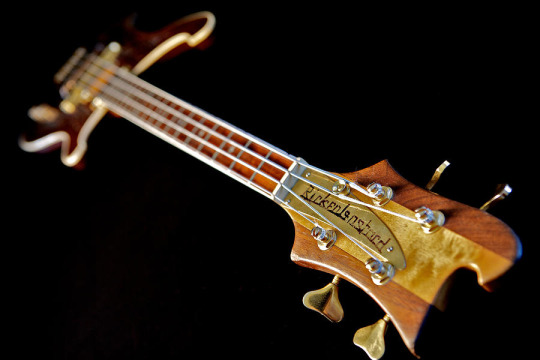

4 notes
·
View notes
Photo

All of your answers were correct - haha! - Adolph Rickenbacker (string instrument manufacturer man) - Orville Redenbacher (popcorn man) - Stefan Redtenbacher (bass man) 3 guys with nearly 'impossible' to pronounce last names for English speakers…every time a delivery man comes to my door they either quiver in their boots to pronounce my last name for fear of getting it terribly wrong or they hand over their gizmo to let me type my own name - others revert to ‘Steve will do’:-) So what….? Well, REDTENBACHER’S FUNKESTRA - my band’s name - just not an easy ride for anyone who’d like to ‘announce’ it - neither saying it or even writing it… ANY CLEVER IDEAS - ANYONE? ALL WELCOME! :-) #rickenbacker #orvilleredenbacher #funkestra #redtenbachersfunkestra #popcorn #bass
1 note
·
View note
Text
The History Of The Electric Guitar
The History Of The Electric Guitar
A Consider The History Of The Electric Guitar Electric Guitars The Electric guitar hasn’t been around nearly as long as the Acoustic and also Classical guitars. As a matter of fact, the Electric guitar was produced just 70 years back (the 1930s) by Adolph Rickenbacker. Since that time, the Electric guitar has actually substantially evolved to the where it is today. In this write-up, we’ll go…
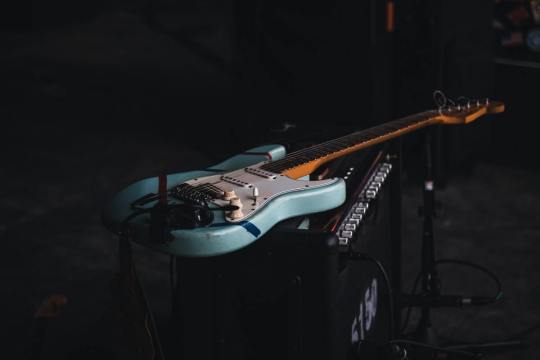
View On WordPress
0 notes
Photo

10 de agosto, pero de 1937, se patentaba en Estados Unidos la guitarra eléctrica. Su creación se atribuye a ADOLPH RICKENBACKER y GEORGE BEAUCHAMP, en 1931, aunque fue este último quien la patentó. Hasta entonces, la guitarra acústica resultó ser un instrumento lo suficientemente versátil y económico, protagonista de la música country de los sectores rurales de América. Sin embargo, a la hora de ensamblar musicalmente con otros conjuntos de instrumentos, como los metálicos o de percusi��n, su volumen resultaba demasiado bajo. Así fue que surgió la guitarra eléctrica, especialmente diseñada para músicos de jazz, que permitió amplificar el sonido. #FredyMetalShow https://www.instagram.com/p/CDuDUY3l6uy/?igshid=elaazoakj0bi
0 notes
Text
QUANDO E QUEM INVENTOU A GUITARRA ELÉTRICA?
Como seria um mundo sem música? Sem graça, não é mesmo? A música tem desempenhado um papel fundamental na vida dos seres humanos há milhares de anos, tanto para a socialização quanto para a comunicação. Alguns estudiosos chegam a especular que ela pode ter vindo antes mesmo da linguagem.
Desde o início dos tempos, as pessoas já faziam algum tipo de som embalado por alguma harmonia e, com o passar dos séculos, foram desenvolvendo instrumentos como tambores, itens de sopro e espécies de objetos com cordas. Esse processo foi acontecendo naturalmente em todas as culturas e em todos os lugares do mundo durante celebrações ou reuniões de pequenos grupos.
Com o avanço da tecnologia, os instrumentos musicais foram se tornando mais sofisticados e, durante o século 20 — mais precisamente entre os anos 50 e 70 —, a Guitarra Elétrica ganhou o posto de instrumento mais importante da música popular e, obviamente, do tão aclamado rock’n’roll.
Chuck Berry, Elvis Presley, Buddy Holly e diversos artistas disseminaram o uso do instrumento no final dos anos 50 e início dos 60. A paixão do rock pela Guitarra se seguiu com os Beatles e Rolling Stones, B.B. King, Jimi Hendrix, Jimmy Page, Eric Clapton, Stevie Ray Vaughan, Slash, John Frusciante, John Mayer e tantos outros adoradores dos acordes. Mas qual é a história por trás da Guitarra elétrica? Você pode Aprender Guitarra em Casa!
O começo dos acordes
Muitas pessoas acreditam que foi Les Paul quem inventou a Guitarra Elétrica em 1940, mas não foi ele, pois o invento foi realizado anos antes. O verdadeiro crédito pela criação do instrumento é de George Beauchamp, um músico, e Adolph Rickenbacker, um engenheiro eletricista. Eles criaram a primeira Guitarra Elétrica moderna de som amplificável e comercialmente viável em 1931, nos Estados Unidos.
Várias pessoas já haviam tentado produzir o instrumento antes deles, mas Beauchamp e Rickenbacker foram os primeiros a realmente conseguir a Guitarra amplificada eletricamente moderna, com qualidade de som boa o suficiente para ser utilizada em um cenário de música profissional.
Um pouco de história
A necessidade de uma Guitarra Elétrica surgiu porque alguns músicos achavam que o violão clássico era muito calmo para contribuir para a produção musical de grupos em vários aspectos. Este problema começou a ser particularmente evidente nas salas de concertos de música de 1880.
Décadas mais tarde, as grandes bandas dos anos 20 priorizavam o som e o ritmo dos instrumentos de percussão, de modo que o violão se tornou um item secundário, produzindo melodias tão baixas (em relação à bateria) que nem mesmo os músicos do grupo podiam ouvir. A necessidade de uma inovação para o violão era óbvia e necessária.
George Beauchamp, um dos integrantes da dupla criadora, já tocava Guitarra havaiana (com estrutura de aço e de uso na horizontal no colo) e isso foi um fator chave para a invenção da Guitarra elétrica.
Beauchamp, então conheceu Rickenbacker no Dopyera Brothers, um fabricante de Guitarra em Los Angeles, e eles concordaram em trabalhar em um projeto de Guitarra Elétrica juntos. Adolph Rickenbacker foi um dos pioneiros em sua área profissional, sendo um homem que gostava de inovações e ousadia, como a fundação da Rickenbacker International Corporation, uma empresa cujo único propósito era criar e fabricar instrumentos musicais elétricos.
Depois de muitas tentativas, finalmente a dupla inventou um dispositivo eletromagnético que pegava as vibrações das cordas da Guitarra com grande clareza. Em poucas palavras, os eletroímãs convertiam essas vibrações em um sinal elétrico, que era amplificado e transmitido através de alto-falantes. Você pode Aprender a Tocar Guitarra Sozinho!
Em 1931, eles instalaram esses captadores em uma estrutura desenhada por Harry Watson, uma Guitarra de colo feita de alumínio chamada "Frying Pan" (frigideira em ingês) devido ao seu tamanho e forma. A partir daí, a invenção se tornou a primeira Guitarra Elétrica comercialmente viável.
Desde essa data, a primeira menção conhecida do público de uma Guitarra eléctrica melhorada apareceu em Wichita, Kansas, em outubro de 1932. O músico Brewer Gage fez uma demonstração para a imprensa com duas de suas aquisições recentes, uma Guitarra havaiana elétrica e outra elétrica padrão, sendo que as duas tinham sido criações de Beauchamp.
As estruturas em madeira vieram com a adaptação do músico Les Paul em 1940, quando ele criou o "The Log", uma Guitarra cujas cordas e captadores foram montados em um modelo esculpido a partir de um bloco sólido de madeira. Desde então, mais e mais modernizações aconteceram e o resto da história o mundo todo conheceu com o sucesso do rock e de outros estilos que utilizam a Guitarra elétrica.
Fatos bônus
Alguns dos primeiros fabricantes de Guitarra s elétricas, além de Rickenbacker, foram a Dobro Company em 1933, Audiovox e Volu-tone em 1934, Vega, Epiphone e Gibson em 1935.
Em 1946, um fabricante grecoamericano de instrumentos musicais e amplificadores chamado Clarence Leonidas Fender, mais conhecido como Leo Fender, construiu o primeiro sucesso comercial da Guitarra Elétrica de corpo sólido com um único eletroímã. O instrumento foi originalmente chamado de Fender Esquire (foto abaixo), que se tornou um clássico e puxou a fila para uma das maiores produtoras de Guitarra do mundo.
Sabia que agora ficou mais fácil Aprender a Tocar Guitarra em Casa?
Fonte: https://www.megacurioso.com.br/papo-de-bar/39720-quando-e-quem-inventou-a-guitarra-eletrica-.htm
0 notes
Photo

🎸 🎸🎸🌟 🏆 🌏 👏🎉🔴 Guitarra, bendita seas 🎸🎸🎸🌟🏆🌏👏🎉🔴 Fue el 10 de agosto de 1937, cuando se patenta en los Estados Unidos 🇺🇸 la exitosa e imprescindible guitarra eléctrica 🎸 sus padres fueron Adolph Rickenbacker y George Beauchamp, para 1931, pero, en verdad fue George Beauchamp quien terminó patentándola 🎸👏🎉🏆🇺🇸1⃣🌏🌟🎼🎶🎵 La guitarra acústica se usó mucho en la música country pero había problemas al momento de ensamblarla musicalmente con otros instrumentos, como los metálicos o de percusión, porque su volumen era demasiado bajo 🎸 Debido a ello surgió la necesidad de aumentarle el volumen 🔊 y probando nació la guitarra eléctrica 🎸🔊 para quedarse para siempre, en verdad, fue diseñada especialmente diseñada para el jazz 🔊 🎺🗣️🎙️🌟🎸🎼🎶🎵🏆 Lee mis artículos sobre La Historia del Jazz 🎺 #arturodelcastilloyap #jaimedelcastillojaramillo #salsaconcausajaimedelcastillojaramillo #salsaconcausalimaperu #abogadounmsmjaimedelcastillojaramillo #abogadojaimedelcastillojaramillo #salsaperújaimedelcastillojaramillo #salsadurajaimedelcastillojaramillo #musicajaimedelcastillojaramillo #hollywoodjaimedelcastillojaramillo #jazzjaimedelcastillojaramillo #guaguancojaimedelcastillojaramillo #musicacubanajaimedelcastillojaramillo #salsalimajaimedelcastillojaramillo https://www.instagram.com/p/B0_RL8fA78m/?igshid=15ajk7n5ge0mq
#arturodelcastilloyap#jaimedelcastillojaramillo#salsaconcausajaimedelcastillojaramillo#salsaconcausalimaperu#abogadounmsmjaimedelcastillojaramillo#abogadojaimedelcastillojaramillo#salsaperújaimedelcastillojaramillo#salsadurajaimedelcastillojaramillo#musicajaimedelcastillojaramillo#hollywoodjaimedelcastillojaramillo#jazzjaimedelcastillojaramillo#guaguancojaimedelcastillojaramillo#musicacubanajaimedelcastillojaramillo#salsalimajaimedelcastillojaramillo
0 notes
Photo

Il concetto di chitarra elettrica nasce dalle intuizioni di Adolph Rickenbacker, che nel 1931 realizzò il primo pick-up elettromagnetico e iniziò ad applicarlo ai normali strumenti acustici. The concept of electric guitar stems from the intuitions of Adolph Rickenbacker, who in 1931 produced the first electromagnetic pick-up and started applying it to normal acoustic instruments. #World #Italy #GM #digiemotion #GMdigiemotion #digital #motion #emotion #idee #immagine #art #experience #blue #brand #beyourself https://www.instagram.com/p/ByPgAxpCAc4/?igshid=1q2o6i4s6ppev
#world#italy#gm#digiemotion#gmdigiemotion#digital#motion#emotion#idee#immagine#art#experience#blue#brand#beyourself
0 notes